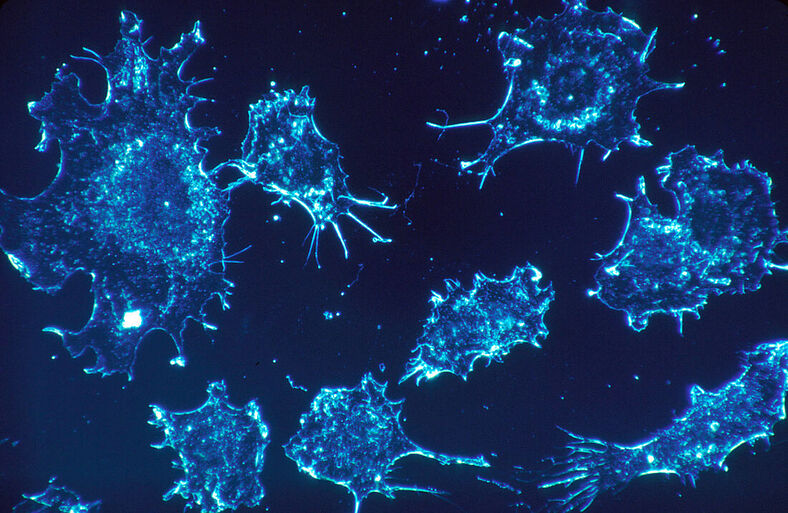Mutations Across the Animal Kingdom: Secrets of Human Aging
Over the past century, breakthrough advancements in medicine and public healthcare have dramatically increased the human lifespan. We are living an estimated 30 years more than humans a century ago, a feat the United Nations calls one of the most significant social transformations of the 21st century. As a result, scientists have investigated the determinants of longevity and pondered whether there is a ceiling for human existence. Evidence suggests that the accumulation of molecular and cellular damage, such as somatic mutations, ultimately determine lifespan beyond age 65. Environmental stressors such as air pollution, ultraviolet light, and alcohol consumption can be potent enough to directly damage tissues and cells; with enough cell damage, carefully-regulated processes can be altered and cause uncontrolled cellular division known as cancer. By this logic, it should follow that the more cells there are in the body, the more opportunities there are for cancerous mutations to arise in the body. However, insight into the animal kingdom tells a very different story.
If the number of mutations was the sole determinant of lifespan, large mammals such as whales and elephants would have sky-high rates of cancer and would quickly reach their demise. Yet, these animals tend to have the longest lifespans, a phenomenon known as the Cancer Paradox. Researchers from the Wellcome Sanger Institute sought to investigate how such mutations are regulated in these longevous species, which have trillions more cells than their human counterparts.
In a genomic analysis of 16 different mammalian species, researchers unveiled stunning results. Despite the animals ranging in size from a mouse to an elephant, all acquired around 3,200 mutations across their lifespan. In other words, despite vastly different lifespans, the mammals all ended their lives with approximately the same number of mutations.
If the number of mutations was the sole determinant of lifespan, large mammals such as whales and elephants would have sky-high rates of cancer and would quickly reach their demise. Yet, these animals tend to have the longest lifespans, a phenomenon known as the Cancer Paradox. Researchers from the Wellcome Sanger Institute sought to investigate how such mutations are regulated in these longevous species, which have trillions more cells than their human counterparts.
In a genomic analysis of 16 different mammalian species, researchers unveiled stunning results. Despite the animals ranging in size from a mouse to an elephant, all acquired around 3,200 mutations across their lifespan. In other words, despite vastly different lifespans, the mammals all ended their lives with approximately the same number of mutations.
Image Source: "Cancer Cells" by Cecil Fox
The ultimate predictor of longevity, the research suggests, is in the rate of mutations. Smaller, short-lived mammals tend to go through this cellular allowance more quickly than humans. In fact, if human DNA mutated at the same rate as mice, we would acquire over 50,000 genetic mutations by the end of our lifespan. This supports the theory that long-living species have protective mechanisms in place that mitigate the effects of deleterious mutations. For example, elephants were found to have more copies of a specific tumor suppressor gene than humans and other mammals.
These discoveries have potential to breathe new life into human cancer therapies. Recent investigations have focused on identifying environmental precursors to cancerous growth. In a 2022 study published by Science, scientists analyzed over 12,000 tumors in search of significant mutational patterns. What they discovered were dozens of genetic “signatures” in the DNA of cancers. These patterns revealed whether cancer patients had been exposed to environmental damage such as UV light and smoking. Knowing how cancers develop gives physicians critical insight on how it may behave in the future. This allows healthcare providers to deliver more effective treatment based on their patients’ environment and lifestyle habits. Moreover, reducing exposure to these stressors may slow the rate of somatic mutation and prolong lifespan.
Although simply adjusting the rate of mutation sounds like an elegant way to curb the maladies of aging, experts remind us that we are constrained by evolution. Mechanisms for controlling mutation rate have been carefully engineered by evolution over thousands of years — medical interference is unlikely to drastically alter our biological hardwire. Nonetheless, these developments have potential to lengthen our healthspan and enhance preventative healthcare. Although the human body may not withstand the wear of time, we can rely on the wealth of knowledge we’ve collected as a species to outlive our years on Earth.
These discoveries have potential to breathe new life into human cancer therapies. Recent investigations have focused on identifying environmental precursors to cancerous growth. In a 2022 study published by Science, scientists analyzed over 12,000 tumors in search of significant mutational patterns. What they discovered were dozens of genetic “signatures” in the DNA of cancers. These patterns revealed whether cancer patients had been exposed to environmental damage such as UV light and smoking. Knowing how cancers develop gives physicians critical insight on how it may behave in the future. This allows healthcare providers to deliver more effective treatment based on their patients’ environment and lifestyle habits. Moreover, reducing exposure to these stressors may slow the rate of somatic mutation and prolong lifespan.
Although simply adjusting the rate of mutation sounds like an elegant way to curb the maladies of aging, experts remind us that we are constrained by evolution. Mechanisms for controlling mutation rate have been carefully engineered by evolution over thousands of years — medical interference is unlikely to drastically alter our biological hardwire. Nonetheless, these developments have potential to lengthen our healthspan and enhance preventative healthcare. Although the human body may not withstand the wear of time, we can rely on the wealth of knowledge we’ve collected as a species to outlive our years on Earth.
Featured Image: "Scientists in the Processing of DNA Sequences" by Karolina Fok is licensed under CC BY 4.0
RELATED ARTICLES
|
Vertical Divider
|
Vertical Divider
|
Vertical Divider
|






